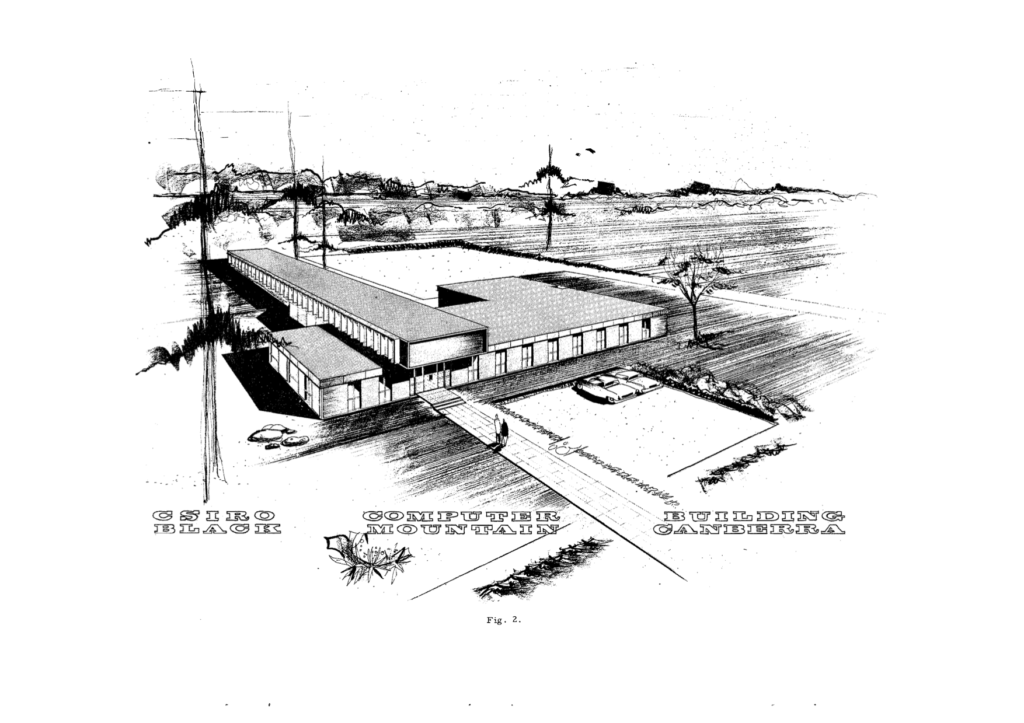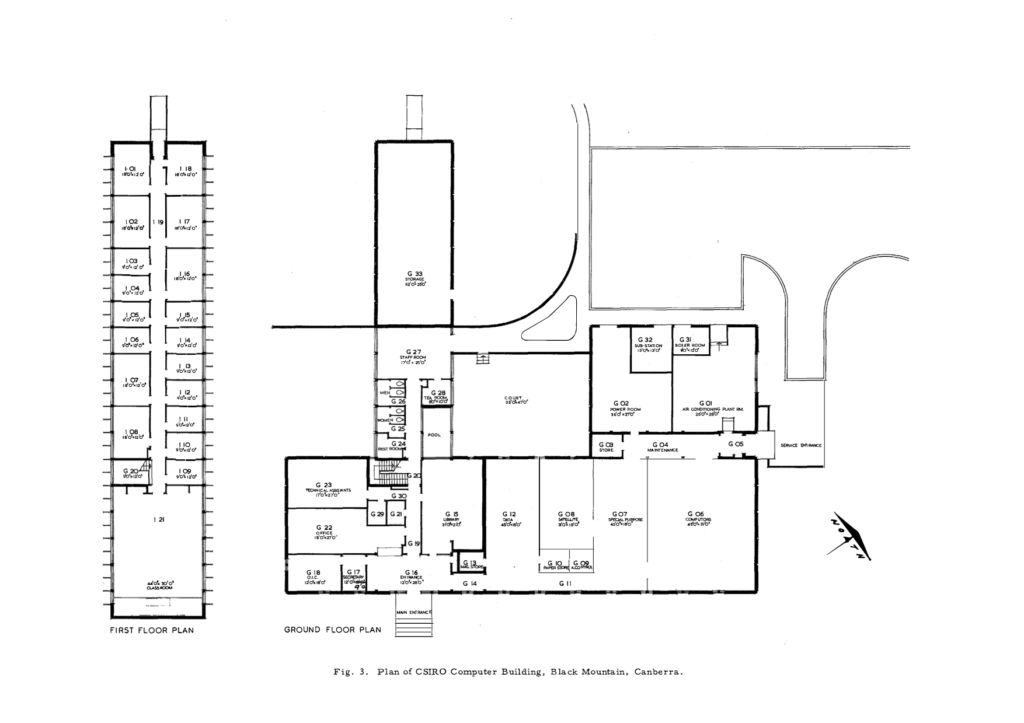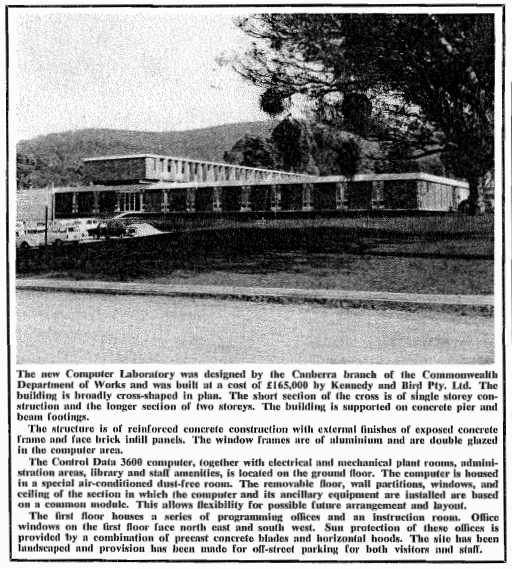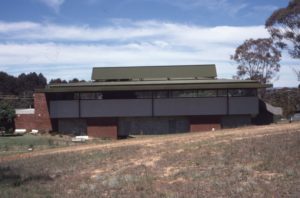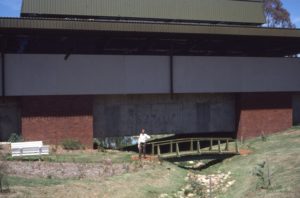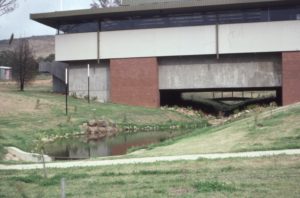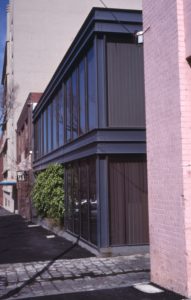CSIRO Computing History, Appendix 8: Locations
Last updated: 5 Oct 2021.
Added photos of Bldg 401C, LET, Carlton.
Robert C. Bell
Appendix 7 — Computing History Home
In the early 1960s, Trevor Pearcey and E. A. Cornish from the CSIRO Division of Mathematics and Statistics prepared a proposal for the establishment of a C.S.I.R.O. computing network, to serve the scientific computing needs for CSIRO, government departments and universities. The proposal was approved by CSIRO and the Commonwealth Government in 1962, and a grant of £3 million was made.
The C.S.I.R.O. Computing Research Section was formed in January 1963, with Godfrey Lance as the founding Chief.
Black Mountain
Plans were drawn up for a Computing Laboratory at Black Mountain.
The Computer Laboratory was officially opened on 17th September 1964 – see the October 1964 CoResearch at
https://csiropedia.csiro.au/wp-content/uploads/2018/09/coresearch_1964.pdf
This building became the headquarters of the Computing Research Section and later the Division of Computing Research and Csironet. It was known as building 401A.
The building initially housed the Control Data Corporation 3600, the main computer of the network, with subsidiary CDC 3200 computers in Adelaide, Melbourne and Sydney.
The building was extended in 1972 to allow for the installation of a CDC Cyber 70 Model 76.
Another building, 401B, was completed in 1976, and provided further office accommodation.
A third building, 401C, was competed in 1980 and provided space for the Fujitsu/Facom systems and the Calcomp/Braegan Automated Tape Library. Here are extracts from the DCR 1980-81 Annual Report ( https://ap01-a.alma.exlibrisgroup.com/view/delivery/61CSIRO_INST/1279819770001981 )
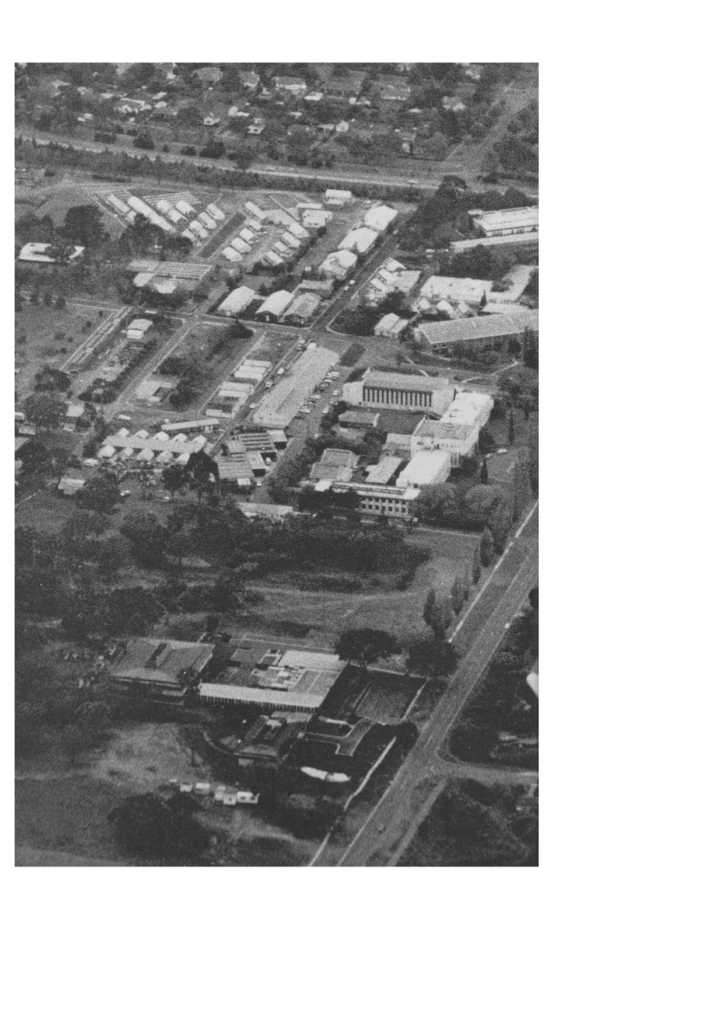 At Trove are pictures of the interior of the machine room in 1983, pictures of the administrative building under construction in 1976, and much more.
At Trove are pictures of the interior of the machine room in 1983, pictures of the administrative building under construction in 1976, and much more.
Here are three pictures, taken in November 1980 soon after completion, of Building 401C. The building bridged a small creek.
Here is a picture of the site from 1984.
The 1960s were notable for the development by CSIRO staff of a new operating system (DAD – Drums And Display) for the CDC 3600, to support the use of the first on-line digital storage using a drum store, and text and graphical display terminals. CSIRO pioneered the development of a distributed network of computers, which became Csironet.
In the late 1980s, Csironet was privatised and continued as the services company PAXUS, which retained use of the buildings at Black Mountain.
Rob Birtles provided a CSIRO Yammer posting (internal to CSIRO) on 25 November 2019, providing further history and photographs of the site, and noting that the building had been demolished.
Victoria
Return to Canberra

